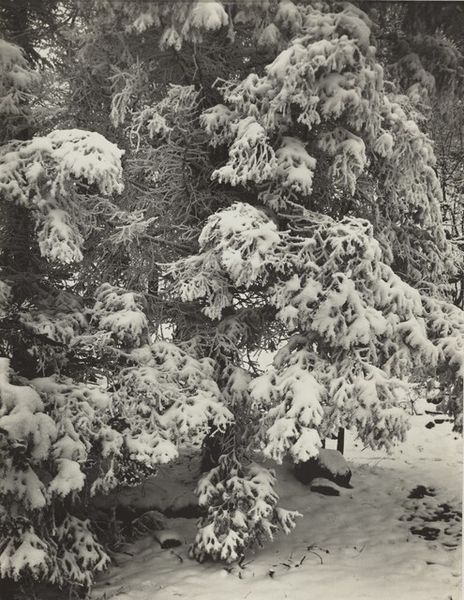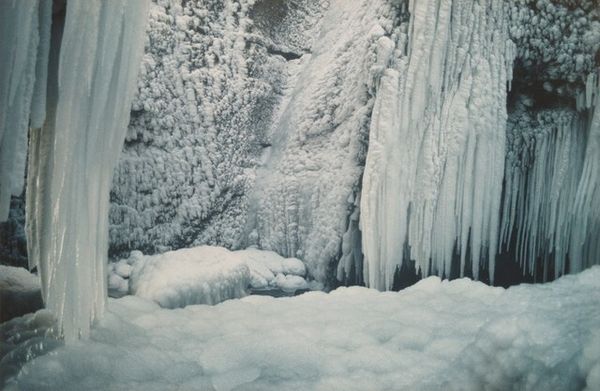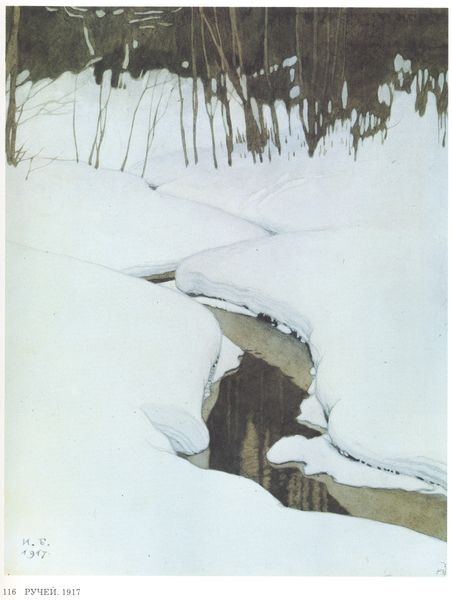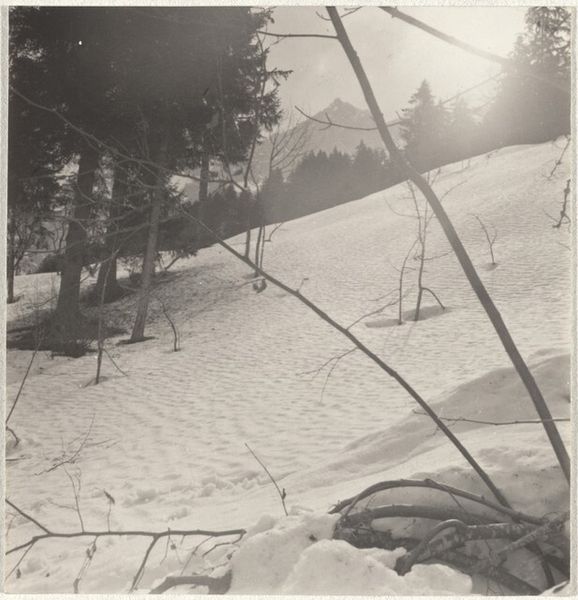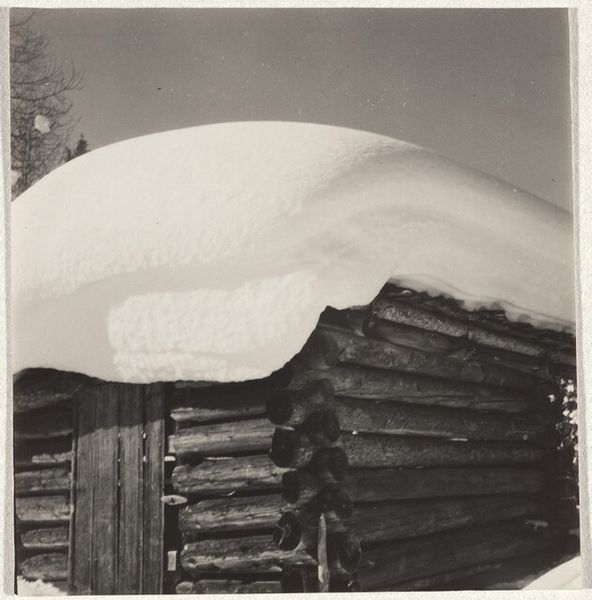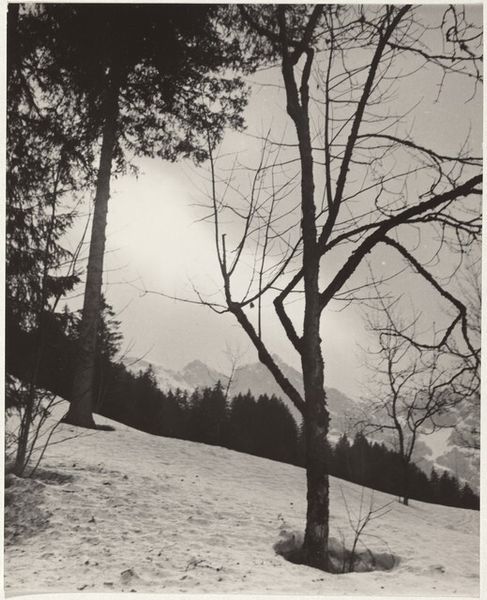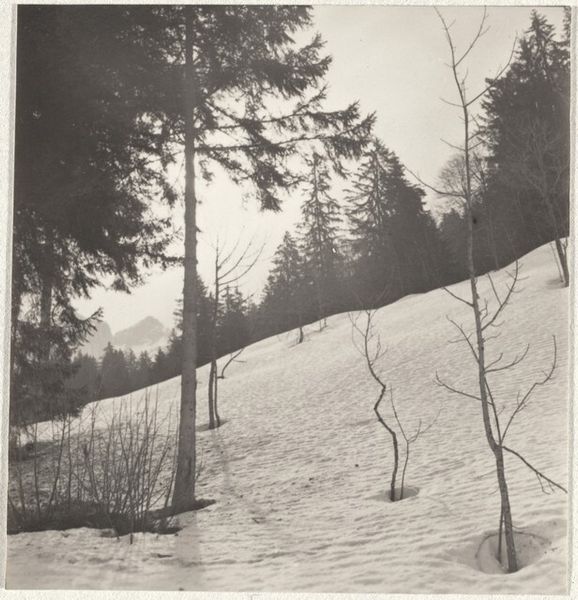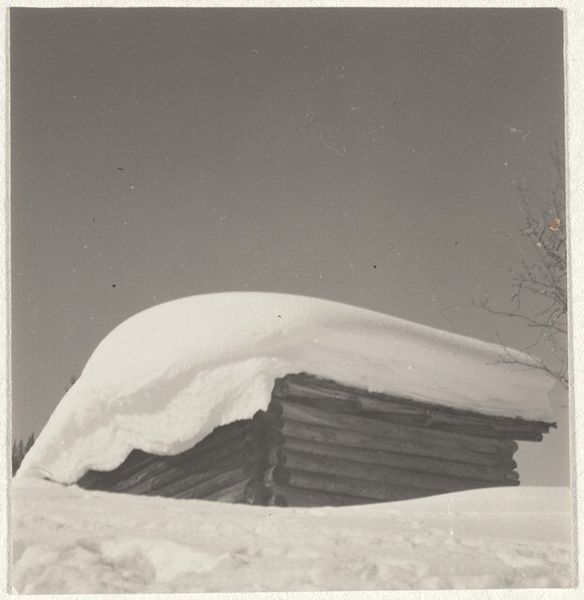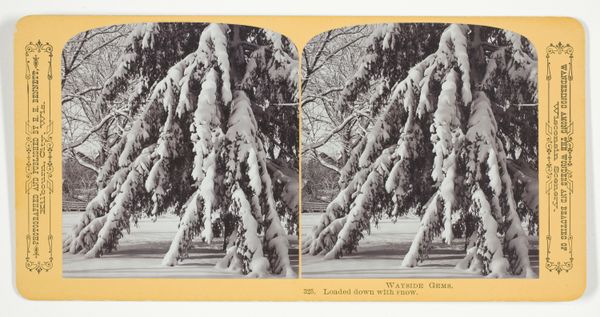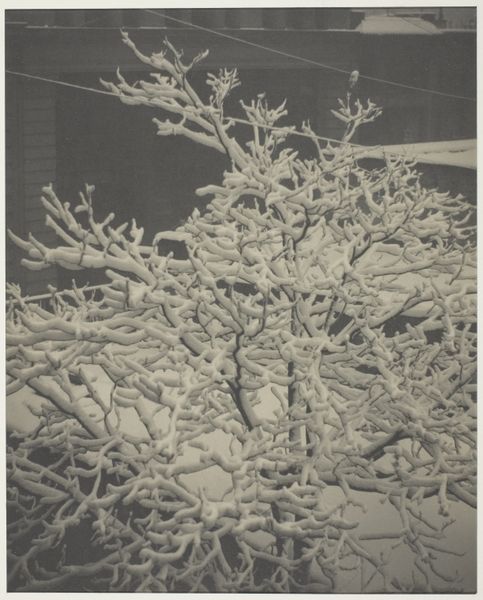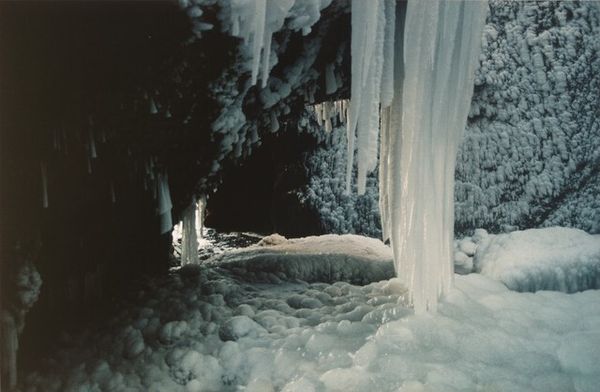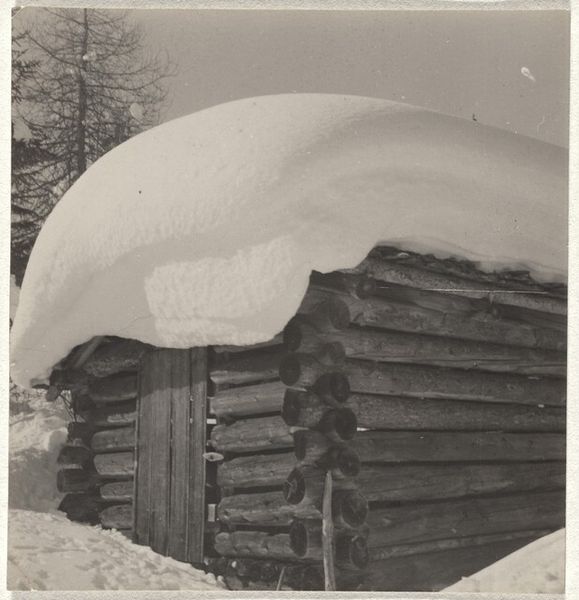
photography
#
landscape
#
photography
#
realism
Dimensions: sheet (trimmed to image): 18 x 17.2 cm (7 1/16 x 6 3/4 in.)
Copyright: National Gallery of Art: CC0 1.0
Editor: This photograph, "Snow-covered trees--Landscape" by Robert Frank, was taken sometime between 1941 and 1945. The heavy snow transforms the trees into these almost ghostly shapes. I’m curious about how we understand the creation of a landscape like this, which is clearly about both the natural world and the act of capturing it on film. What stands out to you in this image? Curator: For me, it's about understanding photography as a *process*—not just as a representational medium. Think about the labour involved: the physical act of traversing this snow-covered landscape, the precision in capturing light and shadow on film. The making of this photo relies upon specific materials and means of production. This period coincides with significant technological developments in photography, so how does the accessibility and evolution of equipment influence Frank's choices in image creation? Editor: So, you're less focused on the trees themselves and more on how the image came to be. How does the material aspect of photography at that time inform our reading of the subject, of the landscape? Curator: Exactly. The material constraints and possibilities shape the aesthetic. Consider the limited dynamic range of film at the time. The stark contrasts between light and dark, accentuated by the snow, become a defining feature, less about representing the landscape "realistically" and more about exploring the materiality of the photographic medium. Editor: I see. It’s not just a picture of trees in snow, but a record of a specific interaction with the landscape, mediated by technology and the artist's labour. Curator: Precisely. And by considering those elements, we move beyond simply seeing "nature" and start to unpack the cultural and technological forces at play in its representation. This makes us think about consumption and the labour it took for such photo to appear for the everyman's eye. Editor: That really shifts my perspective. I was so focused on the beauty of the scene, but understanding the material and production helps me appreciate the image in a much broader context.
Comments
No comments
Be the first to comment and join the conversation on the ultimate creative platform.
